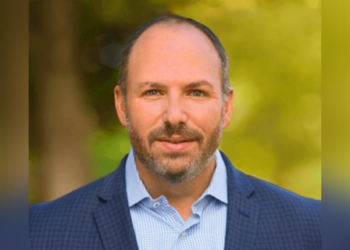ACA came into force with one ostentatious objective- healthcare coverage to as many Americans as possible. The act also sought to save consumers from the tactics of insurance companies that mostly worked in favor of the insurers only and were always heavy on the consumer. The act was signed into law with the formal name of Affordable Care Act ACA. It was passed during the term of president Barack Obama, in 2012, Hence, Obamacare act.
Obamacare has successfully increased the number of Americans who have health coverage many fold. In addition, it has made lives easy by making prescription drugs cheaper, extending screenings coverage, and letting children stay on parents’ health coverage until the age of 26. ACA/ Obamacare has impacted the health insurance landscape quite favorably but it had many critics. With President Trump in office, the program saw many cuts, however, the Biden administration has started showing its support for the program.
Details on the program are given below.
What Is the Affordable Care Act (ACA)?
The Affordable Care Act (ACA) depicts America’s most comprehensive healthcare reform act, signed into law during the Obama administration in 2010. It is one of the most remarkable feats achieved by President Barack Obama. We generally know these reforms as Obamacare, but their formal name is the Patient Protection and Affordable Care Act. It is one of the most notable and detailed healthcare reforms in recent history.
The purpose of Obamacare was simple- to expand healthcare coverage to most Americans and reduce the government’s spending on the system at the same time. Obamacare aims at strengthening and improving conditions in the US healthcare sector which is generally a complicated area of administration.
Obamacare or ACA brought some most-wanted changes in the healthcare sector in the US. It widened Medicaid eligibility (Medicaid is the government’s subsidized healthcare program), getting a lot more people within the realms of healthcare, created health insurance exchanges, making it a legal obligation of Americans to purchase or otherwise obtain health insurance and put a stop insurance companies’ denial of coverage (or charging more) because of some pre-existing conditions.
It made healthcare easy for young ones by allowing children to stay on their parent’s insurance till 26- this is huge. It made insurance easy for many families and covered a lot more people.
Detailing Affordable Care Act (ACA)
The ACA was enacted to simplify and expand healthcare insurance and make health insurance coverage more affordable for people who qualify for it. Making healthcare coverage affordable automatically leads to expanding its base. The ACA includes premium tax credits and cost-sharing reductions to help lower expenses for lower-income individuals and families.
Premium tax credits help lower the health insurance bill each month, making it easier for people to stay covered. Cost-sharing reductions cover you when you are paying out-of-pocket deductibles and copays. Cost-sharing also significantly reduces your yearly expenditure on health insurance.
Both these new policies work towards lowering the cost of health insurance for common people and encouraging more people to join the ranks of those covered.
ACA has made some benefits or, say, healthcare facilities mandatory by putting them under “essential health benefits.” All ACA-compliant health insurance plans, even the programs bought privately at the Health Insurance Marketplace, must cover these benefits. The essential benefits are:
- Ambulatory patient services
- Breastfeeding
- Emergency services
- Family planning
- Hospitalization
- Laboratory services
- Mental health and substance use disorder services
- Pregnancy, maternity, and newborn care
- Prescription medications
- Preventive and wellness services and chronic disease management
- Pediatric services
- Rehabilitative and habilitative service
One notable feature of ACA is that it requires most insurance plans (private and public) to include preventive services. It is remarkable because it not only expands the number of services but quality too. The preventive services include checkups, patient counseling, health screenings, and immunizations.
States that opted for Medicaid coverage could extend the services to a vast majority of people. As of June 2021, 37 states and the District of Columbia had exercised that option.
Insurance is a yearly business in the United States. Every year, an open enrollment period hits the insurance market, during which everyone is welcome to get a new plan, change or extend an existing one. During this period, all decisions regarding health insurance are made. Those who miss this window will have to wait for an entire year for any decision regarding their health insurance plan unless a change of circumstances happens, like getting married, divorced, having children, etc.
Applying for the Obamacare act
Obamacare is what you know as the Affordable Care Act and other insurance plans that the federal and state government subsidies. The government’s health insurance plans are for low-income households who cannot afford to buy their health coverage from their own pocket.
Obamacare health insurance plans come with many names. Formally you may know this plan as ACA, but commonly, it is known as a marketplace plan. The most common way to apply for health coverage is through the health insurance marketplace on the healthcare.gov site, but there are other ways to buy marketplace coverage. One can buy an insurance plan from a company directly or an independent online insurance seller.
The general insurance scenario is that most people have group insurance where they are covered by their employers or some sort of union-related to their employment. Most people apply for Obamacare or any other healthcare insurance plan through their employer. No matter how you are applying for your insurance plan, you will need to do this in the open insurance period or with a special qualification event with a change in your circumstances. The open enrollment period for Obamacare for the current year was around from November 1, 2021, through January 15, 2022. Unless you have already availed a new plan or changed the existing one, you will have to wait until next year for any change in plans.
Preparing to apply for Obamacare
While you haven’t yet gotten a new insurance plan for yourself, you will have some time to prepare yourself for what’s coming and gather ample information for the impending decision. You can figure out your finances and see how much you can afford to pay. Keeping in mind that the monthly premiums can range from $150 to $600 for individuals, you will need to decide the package you want. You must bear in mind that this sticker price doesn’t include many other out-of-pocket expenses that you will need to pay when you opt for an insurance plan.
The marketplace is full of offers, and many may seem confusing to you because of the terminology and technical knowledge that’s part of them. While you don’t have a plan, you have time to research the topic, the charges, and the conditions that come with a package. Knowing the stuff will help you go through the whole ordeal swiftly. Keep a few plans in mind that feel like they will work for you; you can search about the deductibles, copays, and charges from your pocket directly.
If you want an affordable plan, you can look for subsidized programs. The authorities will decide if you qualify for them or otherwise keep in view the projected income on your part. You can find out the limit that works for these subsidized programs and even estimate your income to see if you indeed qualify. Start with your adjusted gross income, aka AGI, and accommodate changes that have occurred since then. If you have this estimate done beforehand, you can have a better, more profound understanding of the options. You can have a clear idea of what you can and cannot afford, leading to choosing a perfect fit.
You will have plenty of help from Healthcare.gov, like you will be informed about all kinds of subsidies that you may qualify for, like the premium tax credit but knowing the exact amount of monetary assistance is a different story. You will have to initiate the application process to get a precise idea of the cost.
How to apply for Obamacare?
As mentioned above, the most common way to buy an Obamacare plan is through marketplace plans, but that’s not the only way. You can try other methods of applying for the program.
As you get ready to apply for the plan, have your basic information ready as you will be asked for your name, household size, address, and projected household income.
Those eligible for subsidies or premium tax credits can use them through healthcare.gov. If you choose a different method, you can avail your support through a certified enrollment partner. When the actual application process begins, you can choose to forward claims against the tax returns of the year to come. Alternatively, you can claim a premium tax credit subsidy on a monthly basis- the choice is yours. This policy is known as an advanced premium tax credit.
Health insurance marketplace
Want to know the easiest way to get your marketplace plan? Well, you can easily guess! The best way to get such a plan is to reach the marketplace. There are various ways of applying for your marketplace plan; you can apply via mail and phone, but the quickest is to apply online. The application goes smoothly, and you can have your plan with minimum effort and without spending too much time.
If you want to know about all the plans to choose from, simply create an account with healthcare.gov. Chances are, you will be redirected to another site for the finalization process. Which site you will be directed to and whether you will be directed to a different site at all depends on your state of residence. The redirection doesn’t mean you are getting a different plan; you are still getting a marketplace insurance plan, but these sites and states operate on their own terms and prices.
Applying for Obamacare via an insurance company
You can apply for Obamacare plans with health insurance companies directly without first going to the government site. The insurer you choose can be an old company that’s been around for ages or someone who just started and exists only virtually. In any case, you will likely be redirected to the insurance marketplace of the government site to complete the insurance application.
Insurance companies are out there for business, and the focus of these companies is not your welfare; they will only show you their own health plans. If you want to get a better idea of the market, you can go to the marketplace directly and compare quotes. This works way better when you are looking forward to reducing insurance costs.
Online comparison sites besides healthcare.gov
You can try Online insurance sellers who will show you marketplace plans from more than one company, and you can even enroll in the programs directly from there. While it will depend on the site you are using for comparison, most of them will actually show all of the plans available on the marketplace.
These sites are perfect for the comparison of different plans because they are simple and easier to navigate. The federal or state health insurance websites can be tedious, too formal, and complicated. Most people get stuck when using the government portals.
Agents, brokers, and assisters
Agents and brokers offer another way of getting your insurance policy. They are licensed salespeople who can help you find the right plan by presenting plans from various providers and explaining the terms and conditions in a simple and easy-to-understand manner. They are commissioned individuals who receive a commission upon selling a policy.
Assisters are certified and even formally trained to help ordinary people to find a marketplace plan — or apply for Medicaid or CHIP (the federal Children’s Health Insurance Program). They are associated with an insurance company or paid by them.
Applying for Obamacare as an immigrant
Your immigrant status does not restrict you in the US from applying for health insurance; the health insurance service is not limited to U.S. citizens. Permanent residents or Green Card holders. Immigrants are allowed by the law to buy marketplace insurance coverage. This includes refugees, asylum seekers, anyone with temporary protected status (TPS), individuals with worker visas, student visas, and more.
You will be asked for additional documents or different kinds of documents when applying for a marketplace health insurance plan. You might have to show documents proving you to be a legal immigrant. This might be a foreign passport, employment authorization, etc.
Unfortunately, undocumented immigrants are not considered legal, so they cannot apply for marketplace health insurance.
Pros of ACA/Obamacare Act
The most significant benefit of the Obamacare act is that more Americans have health coverage now. More than 16 million people got health insurance coverage during the first 5 years of ACA/Obamacare. Young adults in health care coverage increased.
Health insurance is much more affordable than before. That’s one reason more, and more Americans are buying healthcare coverage.
Insurance companies are under the obligation to spend at least 80 percent of insurance premiums on the improvement of the systems and medical care facilities
A strict check on insurers is maintained in order to keep them from increasing rates too frequently and unreasonably.
Insurance coverage isn’t free, but there is a broader range of choices for people to pick a plan.
Massive success is that people with preexisting health conditions are not denied coverage after the Obamacare Act.
The preexisting conditions clause really made things difficult for people because insurance companies outright denied coverage of conditions like Cancer. It was depressing and financially burdening for consumers who were already under a lot of psychological and emotional pressure. Insurers argued that the illness or injury occurred before a person was covered by insurance plans, so companies are not obliged to pay for these conditions.
ACA has changed that effectively; no denial of preexisting conditions anymore.
Chronic illnesses were problematic before ACA; there was a cover on the amount of money that could be spent on a chronic condition. At the end of the limit, the companies would refuse to play anymore. After the ACA, insurance companies were not allowed to limit the money that would be spent on a consumer beforehand.
In addition, time limits are also not allowed on ACA.
ACA has allowed more free screenings to consumers, improving the quality of the services. Things are a lot easier with the ACA in force. Screenings are one of the most expensive parts of the healthcare process; with accessible screenings, things are feasible for all.
The ACA covers many screenings and preventive services with low copays and deductibles. The system works in the hope that if you’re proactive in your healthcare, you will be able to avoid significant health problems.
Healthier consumers mean lower health costs. For example, a free or low-cost diabetes screening with ACA and early, affordable treatment will help prevent costly and exhausting treatment later.
With the ACA in place, Prescription drugs cost much less. The ACA came into force with an intent to make prescription drugs more affordable for the ease of a general American. Many people, especially senior citizens, have a tough time getting their medicines.
The number of prescription and generic drugs covered by the ACA is constantly growing, making the medical landscape more favorable for consumers.
Cons of ACA/Obamacare Act
Premiums have gone higher for most people
Since insurance companies now provide more benefits and cover people with preexisting conditions, have no caps on chronic illnesses expenditure, and many such things, premiums have been increased to match the financial burden that comes with increased facilities.
Several new taxes came into existence to pay the bills for ACA. The added facilities had to be provided for, and the government has chosen to put in place additional taxes for the high-income people, pharmaceutical sales, and medical devices.
The wealthy are now helping make insurance less challenging for the poor by paying additional taxes. Economists believe that ACA expenditure deficits will stabilize over time, and it may even become profitable in the long run.
Enrollment with ACA has been tricky, to say the least. When the program started, the ACA website had quite a few glitches, which slowed down the enrollment process. The signups came much less than the expected numbers, and it was all because of the website that was not consumer supportive at all.
The ACA website and enrollment issues have been resolved, but it’s a complicated process nonetheless. You will find it easier if you are prepared regarding the various plans offered and their hidden and apparent repercussions. Consumers usually complain about the complexity of the website and the way plans have been designed or sorted on the website.
Recently, to add to the existing problem, the enrollment period has also been shortened to between November 1 and December 15. So, it really pays off if you have done your homework about the plans and enrollment hacks.
Many hospitals and public health agencies support consumers with their programs aimed at helping and guiding consumers as well as business owners through the setup process. The ACA website also has sections that explain the procedures and various options to users.
Businesses are cutting employee hours to avoid covering employees
When the ACA was becoming law, there were quite a few opponents, as is the case with any law that’s passed. The opponents argued that the number of jobs might decrease when Insurance becomes this expensive. Employers will not want to cover their employees as it’s such an expensive business. That hasn’t happened, though!
The number of jobs has increased, but reports claim that employers are trying to cut hours by the official definition of 30 hours-a-week full-time workers.
ACA after Obama
After President Obama left office, the ACA weathered opposition and several significant changes.
Trump administration
On January 20, 2017, as his first executive order after joining the office, former President Donald Trump showed his clear intention to defund the ACA, ordering that executive agency heads should “delay the implementation of any provision or requirement of the Act that would impose a fiscal burden on any State.”
The intention of this order indicated the first phase of Republican efforts to repeal and then completely replace the ACA.
Attempts by the government to repeal the law completely were not successful. However, the government did remain successful in substantially scaling back its outreach program to help Americans sign up for the ACA. The government also cut the enrollment period in half in its effort to reduce signups.
Several changes have been made to ACA after President Trump took office; for example, not having insurance meant a fine for the individual under ACA. This clause was repealed in 2017 by the Trump Administration.
By 2018, ACA-covered Americans were losing in numbers. According to a report from the healthcare research organization Kaiser Family Foundation, the number had dropped to 13.8 million (from 17.4 million in 2015).
By 2021, there were 11.3 million people with plans through the ACA, but 14.8 million people newly enrolled in Medicaid through the ACA expansion.
Support for the ACA returned to a record high of 55% at the end of 2020, according to polling from Gallup.16
ACA faced many problems and was on the brink of complete repeal as cases were leveled against it. However, things are expected to take a positive turn under the Biden Administration.
Biden administration
President Joseph Biden, who had helped Obama pass the law, is expected by his party fellows and countrymen to make efforts to strengthen the ACA during his term in office and veto any further legislative attempts to repeal it.
President Biden showed his support for the program by adding a new special enrollment period. In addition, he also plans to focus government resources on improvement in “rules and other policies that limit Americans’ access to health care.”
Federal agencies are ordered to examine five areas and decide whether action is required there:
- Protections for those with preexisting conditions
- Work requirements limitations or any other on access to Medicaid and the ACA
- Policies adversely affecting health insurance markets, including the Health Insurance Marketplace
- Policies hindering easy and swift enrollment in Medicaid and the ACA
- Policies making insurance unaffordable and restricting financial assistance for recipients or dependents
Conclusion
The Affordable Care Act (ACA) came into force in 2010, commonly known as Obamacare. It provided healthcare coverage to millions of previously uninsured Americans. The act mandated that all Americans purchase health insurance or obtain it one way or the other and did away with the denial of coverage by insurance companies on preexisting conditions. ACA also allows children to remain on their parent’s insurance plan until age 26 (this has increased the number of covered Americans many folds)
The ACA also created the Health Insurance Marketplace for the eligible to find and obtain health insurance policies. All ACA-compliant health insurance plans, even those sold through the marketplace, cover several essential health benefits mandated by ACA. The ACA is a landmark in the history of health insurance in the United States.









